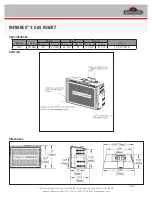
resources, yet each
virtual machine
is a complete environment in itself and runs its own instance
of an operating system (referred to as a guest OS).
See also virtual machine, VM Host.
logical server
A feature provided by
HP Virtualization Manager
, a logical server is a set of configuration and
metadata that you create, activate, and assign to operate within a physical or
virtual machine
.
An active logical server can be moved from one location to another, and its characteristics can
be modified. This feature allows you to populate an enclosure, load balance servers, and evacuate
servers in case of disaster; it allows you to provision resources only when needed and increase
utilization of limited compute resources.
managed
workload
A
workload
that is managed by
HP Global Workload Manager (gWLM)
.
monitored
workload
A
workload
that can be monitored by
HP Virtualization Manager
but has no
policy
associated with
it. Monitored workloads are not managed by
HP Global Workload Manager (gWLM)
.
node
See system.
nPartition
A partition in a cell-based server that consists of one or more cells, and one or more I/O chassis.
Each nPartition operates independently of other nPartitions and either runs a single instance
of an operating system or is further divided into
virtual partitions
.
nPartitions can be used as compartments managed by
HP Global Workload Manager (gWLM)
as
long as several requirements are met. Refer to the gWLM online help for a description of
nPartition requirements.
See also virtual partition.
package
A package groups application services (individual HP-UX processes) together.
parked workload
A
workload
that is not currently associated with a
system
. A workload becomes parked if its
system is set to “none” when it is created or later modified. A parked workload that was
previously associated with a system may have historical data associated with it from
HP Capacity
Advisor
or
HP Global Workload Manager (gWLM)
. As with any workload, the historical data will
be lost if the workload is deleted.
When migrating a workload from one system to another, it may be useful to park the workload
(removing the association with the original system) until the new system becomes available.
This preserves the historical data for the workload across the migration.
partition
A subset of
server
hardware that includes core, memory, and I/O resources on which an
operating system (OS) can be run. This type of partitioning allows a single server to run
an OS independently in each partition with isolation from other partitions.
1.
2.
A resource partition, made up of either a Fair-Share Scheduler or a processor set, that runs
within a single OS. This type of partitioning controls resource allocations within an OS.
See also nPartition, virtual partition.
percent resident
memory
A measure of the fractional amount of physical memory in use by a particular application for
a period of time.
policy
A collection of rules and settings that control
workload
resources managed by
HP Global Workload
Manager (gWLM)
. For example, a policy can indicate the minimum and maximum amount of
CPU resources allowed for a workload, and a target to be achieved.
A single policy can be associated with multiple workloads.
process map
A script residing in
/etc/opt/vse/scripts
that enables you to create output process IDs
(PIDs).
processor set
See PSET.
pruned
When a file is reduced to a set number of lines based on criteria determined by the system
(application) or the software user.
regular
expressions
Application Discovery recognizes regular expressions constructed using Perl 5 or POSIX syntax
and semantics.
running
application
An application that is continually or intermittently active and able to consume resources.
70
Glossary









































